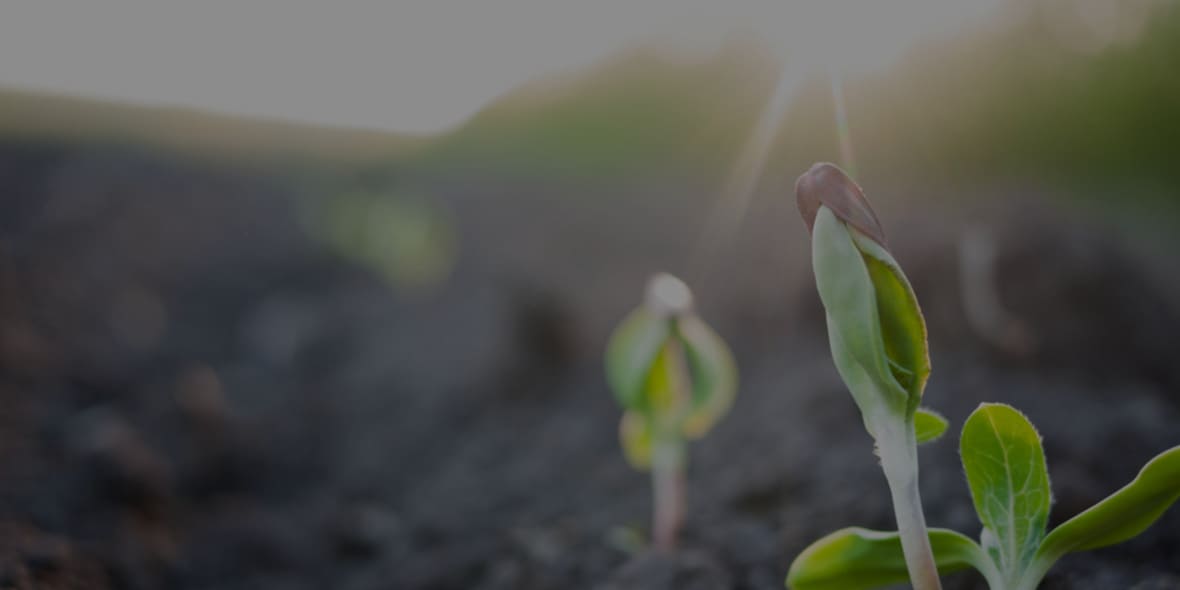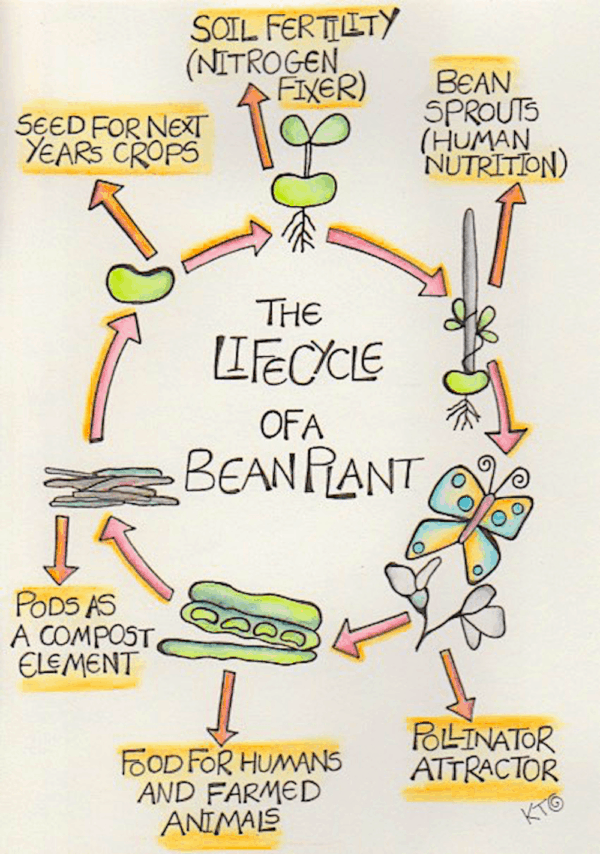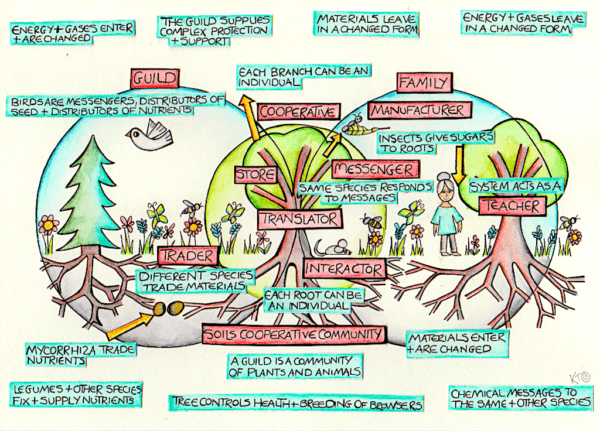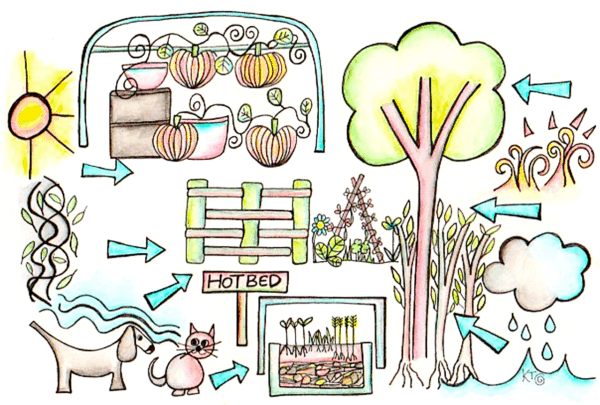
What is biomimicry?
Biomimicry is a scientific discipline that studies the creative process of imitating nature’s methods and systems to solve human problems. It is not a new concept: examples of it have been found as far back as the ancient Mayan culture, and its principles have been applied in various sectors since the 1970s.
It can be applied to various areas, including design, architecture, engineering, ecology, and sustainability.
In the design field, it involves studying and replicating nature’s examples of efficient, sustainable, and elegant design. As such, it is a great tool for those who are interested in sustainable design.
With this approach, permaculture designers look to nature for examples of sustainable practices and then try to replicate them.
All that is and ever was
Why is biomimicry relevant?
All things that exist are made of the same basic patterns, and we can use those patterns to understand, interact with, and mimic nature, so that our homes, gardens, and lifestyles are more sustainable.
When designing with biomimicry, the core goal is to create sustainable solutions by learning from the examples of nature. Creating sustainable solutions can be done in a variety of ways, including:
- Discovering and understanding specific principles found in nature and then applying them to human problems.
- Learning about and replicating the specific designs used in nature, such as the design of a beehive or a spider web.
- Replicating the functionality of nature’s systems, such as the photosynthesis of plants or the flow of water.
The goal of this article is to help you become acquainted also with the core set of patterns that make up all matter, on every scale of the known universe, and to explore ways we can mimic, understand, and adapt to those patterns on every scale of our permaculture design project.

Making use of available resources
Biomimicry has the potential to revolutionize the way we view and interact with the natural environment, by learning from nature’s examples and applying them to our own lives. By following the principles of biomimicry and permaculture design, we can create nature-inspired solutions that are both effective and sustainable.
There are so many wonderful videos about this topic online already, so rather than make something repetitive, we’ve picked a few of our favorites to share.
In this sweet, simple overview, Amy Lamb shows the common recurring patterns in nature that make up all things.
Alan Turing was less famous than Einstein or Tesla, but his study of patterns changed the way humans see, study, and interact with nature.
Biomimicry in Permaculture
In a permaculture context, we study biomimicry to help understand how we can apply natural patterns to our whole systems design. Here’s an excellent short article to introduce the concept.

Here’s a fun animation about biomimicry, from the folks at Sustainability Illustrated.
Benefits of combining biomimicry and permaculture design
Biomimicry can be used by anyone interested in creating a sustainable lifestyle, and to address a variety of issues such as food security, water scarcity, and climate change. It can also be applied to areas such as sustainable agriculture, sustainable architecture, and sustainable energy.
Since permaculture is a holistic design approach that aims to create sustainable and productive ecosystems that mimic natural systems and apply biomimicry, the two fields can be used together to create effective and sustainable solutions for living.
When applied to a specific area, such as sustainable agriculture, it can help to create sustainable solutions. For example, when growing plants hydroponically, one can use biomimicry to create a natural fertilizer by mimicking compost with a mixture of worms and vegetable scraps!
For those who are interested in using the principles of biomimicry in permaculture design, it is important to select the area or focus of your design. It is also important to select the right examples of nature-inspired solutions.
Try this “patterns in nature” treasure hunt!
This time, we’re hunting for patterns in nature!
Go out for a walk in nature and see how many of these patterns you can find.
Take pictures and create your own collage, then share it!
Part two: personal patterns
Spend a week keeping track of your daily habits.
- What do you eat?
- Where do you go?
- Who do you see?
- What do you buy?
- What do you waste?
- What do you create?
- Are you taking more than you give, from an ecological standpoint?
- Can you strike a better balance?
- How?
Want to learn more about this and other topics related to permaculture, sustainability, and whole-systems design?
We offer a range of FREE (donations optional) online courses!
Relevant Links and Resources
Toby Hemenway, author of Gaia’s Garden, a Guide to Home-scale Permaculture, often discussed how patterns in nature can be applied to every aspect of our lives.
Read an article and watch Toby here.
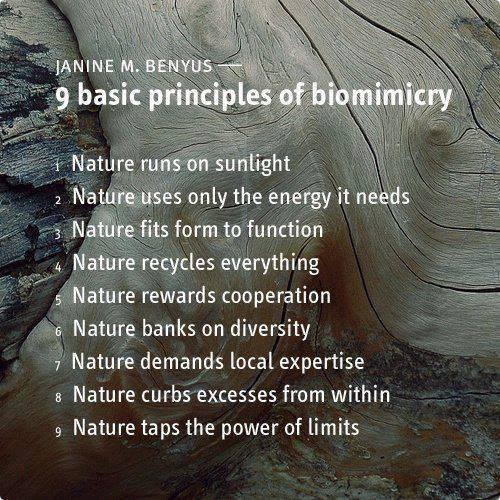
Two articles by illustrator, permaculture teacher, and disability advocate, Kt Shepherd:

